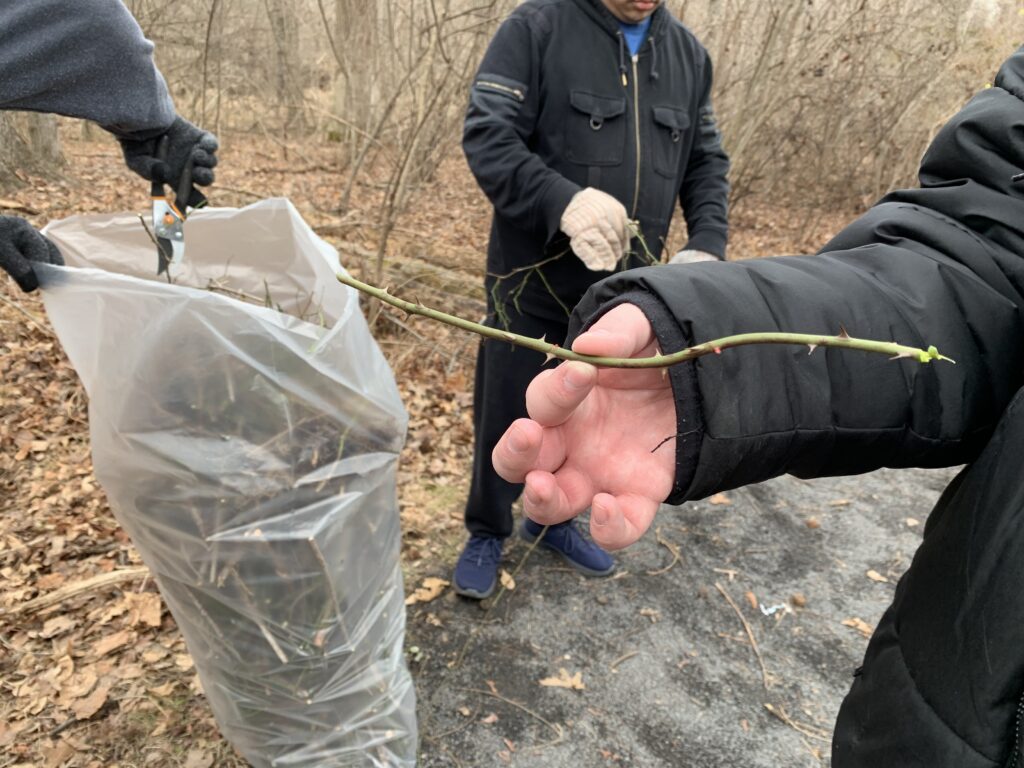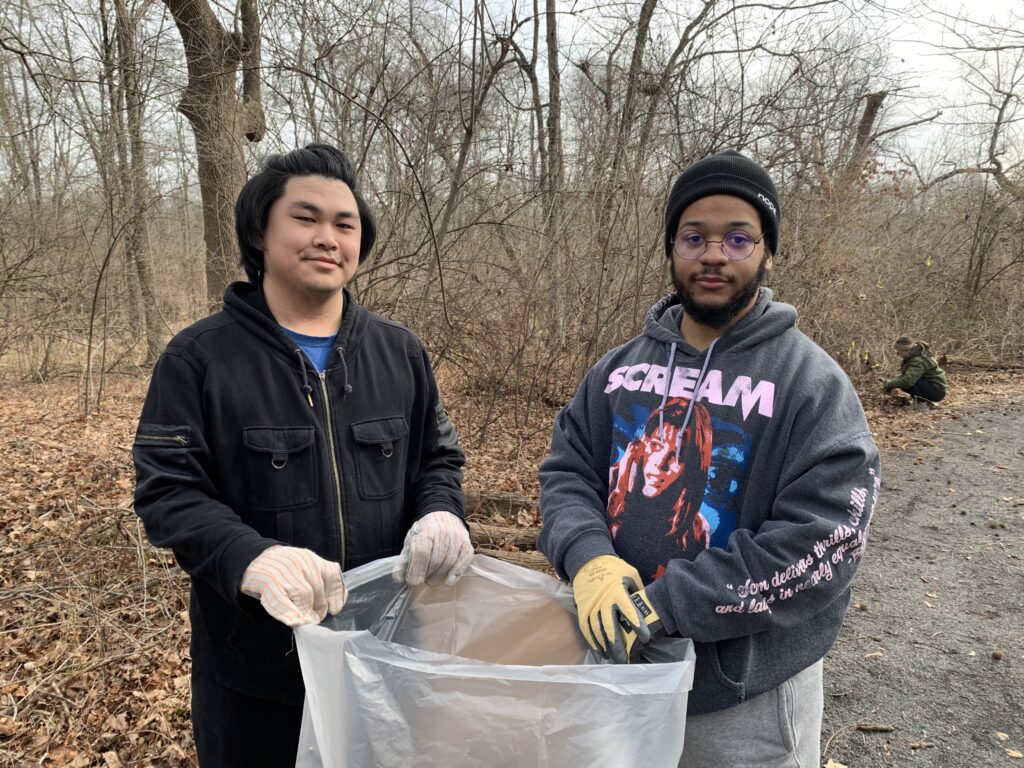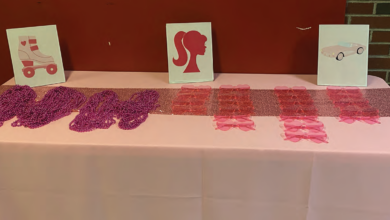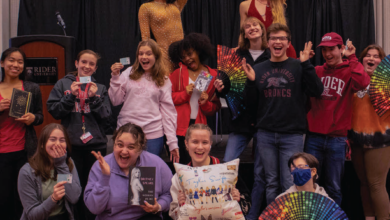
Pesky plants: a mission to remove Multiflora Rose
By Sofia Santiago
AMID the winding trails of Silver Lake Nature Center, grows a thicket of ever-climbing arching canes and thorny bushes, a parasite to the native species living there. Left unchecked, its spread would completely take over the area.
The responsibility falls on SLNC staff and volunteers to battle this aggressive plant and keep biodiversity safe.
On Feb. 8 at 10 a.m., The Invasive Plants Removal Team, consisting of volunteers of all ages, including Rider University students, organized to deal with Multiflora Rose. Before heading into the forest to tackle a thicket of the invasive species, volunteers gathered under the park’s pavilion and signed themselves in. They were provided with gloves and debriefed about the rose and how they would remove it.
The group led by Raymie Barry, assistant director-naturalist and volunteer coordinator of SLNC, learned about the history of the plant.
Multiflora Rose was brought to the United States from Asia during the 1860s, as a rootstock for roses. At the time, the United States Department of Agriculture promoted it as a living fence for cattle and livestock, perfect for farmers who wanted to save on fence-building costs. It was used for wildlife purposes and erosion control, especially in the Northeast and Midwest and it was soon planted in the designated area. The USDA soon realized that it was a mistake.
“Multiflora Rose has no predators here, some people see that as a good thing but in a natural setting you want to encourage biodiversity. Insects don’t really use Multiflora Rose for anything. The deer don’t eat it,” Barry explained.
The lack of natural predators allowed the plant to spread quickly and overpower native plants.
At the end of the demonstration, a stalk of Multiflora Rose was passed around so volunteers could identify its thorns and color. A stalk of Greenbrier, a native plant, was also passed around for comparison. In the winter, both plants look green and have thorns; however, the thorns are different shapes and point in different directions.

Armed with pruning shears, root wrenches and shovels, the team walked to the site of a sprawling Multiflora Rose bush. Intertwined with now flopping trees, the thicket was dense and harmful to the life around it.
In an effort to rescue the trees, the removal process began. Volunteers trimmed it into little sections, got to the root and pulled the root ball out of the ground.
The disposal of Multiflora Rose was described by Barry, “We bag [the Multiflora Rose] because just one of the little canes can grow a whole new plant. So if you leave a little cane on the ground, and it gets the right conditions, it isn’t that hard for a new one to regrow.”
She shared that in the last year, almost 4,000 pounds of about 30 different species were removed from the park, mostly done by volunteers. SLNC has a volunteer work day once a month, which consists of trail maintenance, cleanups and the public invasive plant removal. Barry remarked, “We are out there all year round, even in the snow!”
Apart from conservation and preservation, SLNC’s goals are focused around education. They host a variety of different programs, from free to charged, they host crafts, walks, garden clubs and citizen science projects.
SLNC was established because Bucks County, Pennsylvania saw a need for something like it in the community. The park’s land used to be a farm and remnants of its past can still be seen.
“The people who come out here weekly, or even daily, see value in it and in their community,” Barry said about the volunteers. “Being out in nature is very healing, and it makes you feel better, even if it’s just watching some birds or taking a walk.”

Senior human resource management major, Hao Kin Chong, agreed.
“The air is fresh, you get to learn more about plants and it’s like being a kid again in a sandbox, but with actual plants. It’s fun when you get into it,” Chong said.
As the seven bags full of Multiflora Rose were tied up and set aside, the volunteers looked proud of the dent they made in the thicket, though much of it remained.
Barry noted, “It will always be an issue, it will always be here, I can’t imagine it ever going away. We do our best to remove it manually, which is why we have so many volunteer opportunities because there is plenty to go around.”



